Are you struggling with power issues in your small business? You're not alone. Many business owners face this challenge daily.
A 75kVA transformer is a power distribution device that converts high voltage electricity to a lower, usable voltage for small businesses. It's ideal for shops, restaurants, and small offices, providing reliable power for lighting, equipment, and HVAC systems while ensuring safety and efficiency.
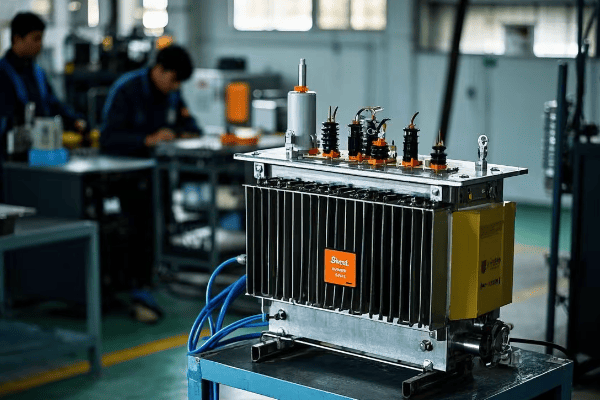
As an electrical engineer with years of experience in power solutions for small businesses, I've seen firsthand how crucial the right transformer can be. Let's dive into the world of 75kVA transformers and discover why they might be the perfect fit for your business needs.
Understanding 75kVA Transformers: Key Features and Applications?
Have you ever wondered what makes a 75kVA transformer special? You're about to find out why it's a game-changer for small businesses.
A 75kVA transformer is a medium-sized power distribution unit that balances capacity and efficiency. It features a 75,000 volt-ampere rating, suitable for powering multiple devices in small commercial settings, and offers key benefits like voltage regulation and electrical isolation.
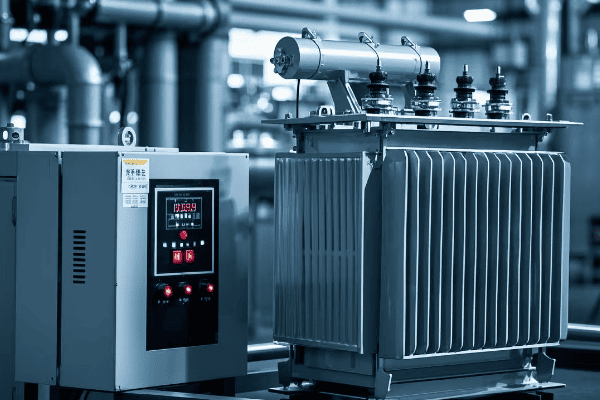
In my years of working with small business power solutions, I've found 75kVA transformers to be incredibly versatile. Let's break down their key features and applications:
Key Features of 75kVA Transformers
-
Power Rating
- 75,000 volt-amperes (75kVA)
- Suitable for small to medium-sized businesses
-
Voltage Transformation
- Typically steps down from 480V or 600V to 120/208V or 277/480V
- Customizable to specific business needs
-
Efficiency
- High efficiency ratings, often above 97%
- Reduces energy losses and operating costs
-
Size and Weight
- Compact design, typically under 1000 lbs
- Easy to install in various business settings
-
Protection Features
- Overload protection
- Short circuit protection
- Thermal protection
| Feature | Specification | Benefit |
|---|---|---|
| Power Rating | 75kVA | Ideal for small businesses |
| Input Voltage | 480V or 600V | Flexible installation |
| Output Voltage | 120/208V or 277/480V | Suitable for various equipment |
| Efficiency | >97% | Lower energy costs |
| Size | Compact | Easy installation |
I remember a project where we installed a 75kVA transformer in a growing restaurant. The owner was amazed at how this single unit could power their entire kitchen equipment, lighting, and HVAC system efficiently.
Common Applications
-
Retail Stores
- Powers lighting, cash registers, and security systems
- Handles peak loads during busy shopping hours
-
Restaurants
- Supplies power to kitchen equipment, refrigeration, and dining area
- Manages varying load demands throughout the day
-
Small Offices
- Powers computers, printers, and other office equipment
- Provides stable power for sensitive electronics
-
Workshops and Small Manufacturing Units
- Runs power tools and small machinery
- Offers flexibility for equipment upgrades
-
Medical Clinics
- Powers diagnostic equipment and lighting
- Ensures reliable power for critical operations
In my experience, the versatility of 75kVA transformers makes them an excellent choice for growing businesses. They offer enough capacity to handle current needs while providing room for future expansion.
Advantages for Small Businesses
-
Cost-Effective Power Solution
- Balances power needs and budget constraints
- Reduces energy costs through efficient operation
-
Reliability
- Stable power supply reduces equipment downtime
- Built-in protection features safeguard business operations
-
Scalability
- Allows for business growth without immediate power system overhaul
- Can be paralleled for increased capacity if needed
-
Safety
- Provides electrical isolation, protecting equipment and personnel
- Complies with electrical safety standards for commercial settings
Understanding the features and applications of 75kVA transformers is crucial for small business owners looking to optimize their power systems. These transformers offer a perfect balance of capacity, efficiency, and cost-effectiveness, making them an ideal choice for a wide range of small commercial applications.
How Does a 75kVA Transformer Work? A Simple Guide for Business Owners?
Ever wondered about the magic behind powering your business? Let's unravel the mystery of how a 75kVA transformer keeps your operations running smoothly.
A 75kVA transformer works by using electromagnetic induction to convert high voltage electricity to a lower, usable voltage. It consists of two coils - primary and secondary - wound around an iron core. The ratio of turns in these coils determines the voltage transformation.
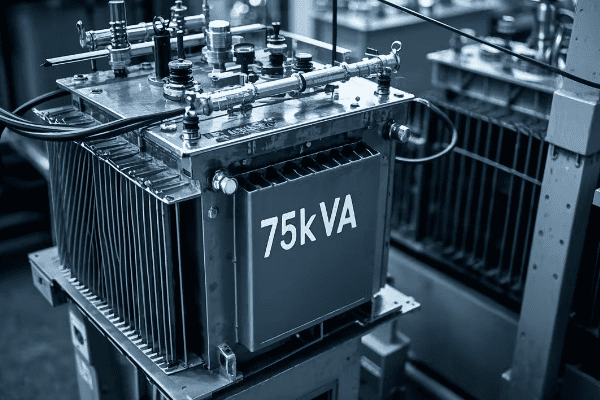
Throughout my career, I've explained this concept to numerous business owners. Let's break it down into simple, easy-to-understand steps:
Basic Working Principle
-
Input Power
- High voltage electricity enters the primary coil
- Typically 480V or 600V in commercial settings
-
Electromagnetic Induction
- The alternating current creates a changing magnetic field in the iron core
- This field induces a voltage in the secondary coil
-
Voltage Transformation
- The ratio of turns between primary and secondary coils determines the output voltage
- Fewer turns in the secondary coil result in lower output voltage
-
Output Power
- Lower voltage electricity is available at the secondary coil
- Usually 120/208V or 277/480V for business use
Key Components and Their Functions
-
Primary Coil
- Receives high voltage input
- Made of many turns of thin wire
-
Secondary Coil
- Delivers lower voltage output
- Fewer turns of thicker wire
-
Iron Core
- Concentrates magnetic field
- Improves efficiency of energy transfer
-
Insulation
- Separates coils and core
- Prevents short circuits and ensures safety
-
Cooling System
- Oil or air cooling to manage heat
- Crucial for maintaining efficiency and longevity
| Component | Function | Importance |
|---|---|---|
| Primary Coil | Receives input voltage | Essential for power input |
| Secondary Coil | Delivers output voltage | Determines usable power |
| Iron Core | Magnetic field transfer | Enhances efficiency |
| Insulation | Electrical separation | Ensures safety |
| Cooling System | Heat management | Prolongs transformer life |
I once had a client who was skeptical about how a "simple box" could power their entire shop. After explaining the process and showing them the internal components, they were amazed at the engineering behind it.
The Transformation Process in Detail
-
Voltage Step-Down
- The fewer turns in the secondary coil reduce the voltage
- For example, a 10:1 turn ratio steps 480V down to 48V
-
Current Step-Up
- As voltage decreases, current increases proportionally
- This ensures power (voltage × current) remains constant, minus small losses
-
Power Conservation
- Ideally, input power equals output power
- In reality, there's a small loss due to heat and magnetic effects
-
Efficiency Calculation
- Efficiency = (Output Power / Input Power) × 100%
- 75kVA transformers typically achieve over 97% efficiency
Real-World Application for Business Owners
-
Load Management
- Transformer can handle various loads up to its rated capacity
- Important to balance loads across phases for optimal performance
-
Voltage Regulation
- Maintains stable output voltage despite input fluctuations
- Crucial for sensitive equipment in your business
-
Overload Capacity
- Can handle short-term overloads, usually up to 20% for a few hours
- Useful during peak business hours or seasonal demands
-
Power Factor Correction
- Some 75kVA transformers help improve power factor
- This can lead to reduced electricity bills and improved efficiency
Understanding how a 75kVA transformer works is more than just technical knowledge. It helps business owners make informed decisions about their power needs, troubleshoot basic issues, and communicate effectively with electricians or utility providers. By grasping these concepts, you're better equipped to manage your business's electrical infrastructure efficiently and safely.
75kVA vs Other Transformer Sizes: Which is Right for Your Small Business?
Struggling to choose the right transformer size for your business? You're not alone in this common dilemma.
The 75kVA transformer is a mid-range option, ideal for small to medium-sized businesses. It offers more power than 50kVA models, suitable for larger shops or offices, but is more cost-effective than 100kVA units for businesses that don't need that much capacity.
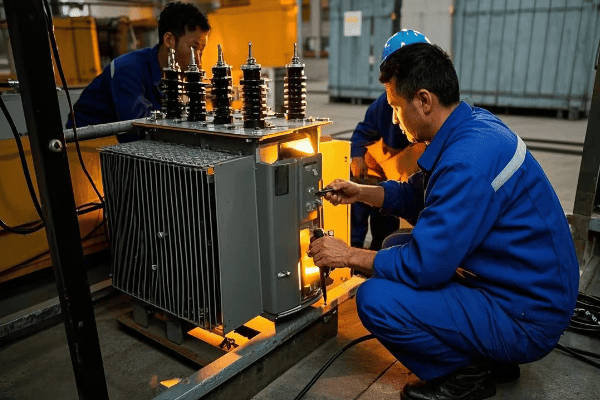
In my years of consulting for small businesses, I've helped many owners find the right transformer size. Let's compare 75kVA transformers with other common sizes:
Comparison of Common Transformer Sizes
-
50kVA Transformer
- Suitable for very small businesses
- Typical applications: small shops, cafes, small offices
-
75kVA Transformer
- Ideal for small to medium businesses
- Typical applications: restaurants, medium-sized retail stores, small manufacturing units
-
100kVA Transformer
- Suitable for larger small businesses or those with high power demands
- Typical applications: large retail stores, small industrial units, multi-story office buildings
| Size | Power Capacity | Typical Applications | Relative Cost |
|---|---|---|---|
| 50kVA | Lower | Small shops, cafes | Lower |
| 75kVA | Medium | Restaurants, medium retail | Moderate |
| 100kVA | Higher | Large retail, small industry | Higher |
I once worked with a growing restaurant chain. They initially installed 50kVA transformers in new locations but found they quickly outgrew this capacity. Switching to 75kVA units provided the perfect balance of power and cost-effectiveness for their expanding needs.
Factors to Consider When Choosing Transformer Size
-
Current Power Needs
- Calculate your total power requirements
- Include all equipment, lighting, HVAC, etc.
-
Future Growth
- Anticipate increased power needs
- Consider a slightly larger transformer for expansion
-
Peak Load Demands
- Account for times of highest power usage
- Ensure the transformer can handle short-term overloads
-
Physical Space Constraints
- Larger transformers require more space
- Consider installation location and accessibility
-
Budget Considerations
- Balance initial cost with long-term efficiency
- Consider operational costs and potential energy savings
Advantages of 75kVA Transformers for Small Businesses
-
Versatility
- Suitable for a wide range of small business types
- Balances power needs and cost-effectiveness
-
Room for Growth
- Provides capacity for business expansion
- Avoids need for frequent upgrades
-
Efficiency
- Often more efficient than smaller models
- Can lead to long-term energy savings
-
Cost-Effective
- More affordable than larger units
- Offers good value for power capacity
When to Choose a Different Size
-
Choose 50kVA if:
- Your business is very small with minimal equipment
- You have limited physical space
- Budget is a significant constraint
-
Choose 100kVA if:
- You have high power demands
- Rapid business growth is expected
- You need to power heavy machinery or equipment
-
Consider Custom Sizes:
- For unique power requirements
- When standard sizes don't fit your needs
In my experience, many small businesses find that 75kVA transformers hit the sweet spot between capacity and cost. They offer enough power for most small business needs while providing room for growth, making them a smart long-term investment.
Case Study: Retail Store Upgrade
I once worked with a retail store owner who was expanding their business. They were using a 50kVA transformer but found it insufficient for their new, larger space. Here's how we approached the decision:
-
Power Audit
- Calculated current usage: 45kVA
- Estimated future needs with new equipment: 65kVA
-
Consideration of Options
- 50kVA: Too small for future needs
- 75kVA: Adequate for current and future needs
- 100kVA: More capacity than needed, higher cost
-
Decision
- Chose 75kVA transformer
- Provided 15% headroom for unexpected growth
-
Result
- Smooth operation even during peak shopping seasons
- Energy bills remained manageable
- No need for further upgrades in the next 5 years
Choosing the right transformer size is crucial for your business's current operation and future growth. While 75kVA transformers are often an excellent choice for small to medium businesses, the best decision always depends on your specific needs and circumstances. By carefully considering your power requirements, growth plans, and budget, you can select a transformer that will serve your business efficiently for years to come.
The Benefits of Using a 75kVA Transformer in Small Commercial Settings?
Wondering if a 75kVA transformer is worth the investment for your small business? You're about to discover why it might be the perfect power solution you've been looking for.
75kVA transformers offer numerous benefits for small commercial settings, including improved power quality, energy efficiency, and scalability. They provide stable voltage for sensitive equipment, reduce energy losses, and offer capacity for business growth, all while maintaining a balance between performance and cost-effectiveness.
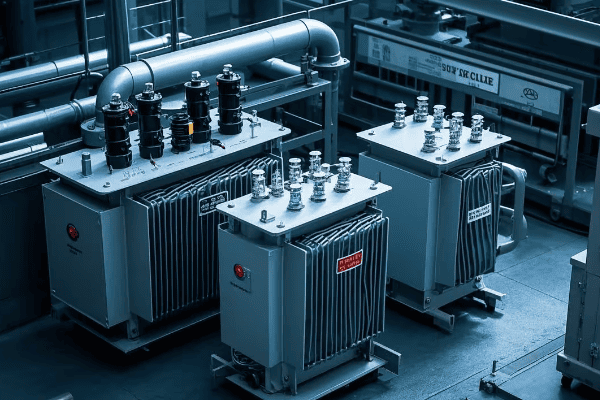
Throughout my career, I've seen many small businesses thrive after installing 75kVA transformers. Let's explore the key benefits that make these transformers an excellent choice:
Key Benefits of 75kVA Transformers
-
Improved Power Quality
- Stable voltage output
- Reduced harmonic distortion
- Protection against power surges
-
Energy Efficiency
- High efficiency ratings (typically >97%)
- Lower energy losses compared to older or smaller transformers
- Potential for reduced electricity bills
-
Scalability
- Adequate capacity for most small businesses
- Room for growth and expansion
- Can be paralleled for increased power if needed
-
Versatility
- Suitable for various small commercial applications
- Can power a mix of equipment and systems
-
Cost-Effectiveness
- Balance between capacity and cost
- Long lifespan reduces long-term expenses
| Benefit | Description | Impact on Business |
|---|---|---|
| Power Quality | Stable, clean power | Protects equipment, reduces downtime |
| Energy Efficiency | High efficiency, low losses | Lower operating costs |
| Scalability | Room for growth | Supports business expansion |
| Versatility | Suits various applications | Adaptable to business needs |
| Cost-Effectiveness | Balanced investment | Good long-term value |
I recall a small manufacturing business that was struggling with frequent equipment failures and high energy bills. After installing a 75kVA transformer, they saw a 15% reduction in energy costs and significantly fewer equipment breakdowns.
Detailed Analysis of Benefits
-
Improved Power Quality
- Voltage Regulation: Maintains steady voltage despite input fluctuations
- Harmonic Mitigation: Reduces electrical noise that can affect sensitive equipment
- Surge Protection: Helps safeguard against damaging power surges
-
Energy Efficiency
- Low Core Losses: Modern core materials minimize energy waste
- Reduced Copper Losses: Efficient winding designs lower resistance losses
- Cool Operation: Efficient design means less energy lost as heat
-
Scalability and Future-Proofing
- Capacity for Growth: Can handle increased loads as business expands
- Parallel Operation: Multiple units can be3. Scalability and Future-Proofing
- Capacity for Growth: Can handle increased loads as business expands
- Parallel Operation: Multiple units can be connected for higher capacity
- Adaptability: Can often be reconfigured for different voltage needs
-
Versatility in Applications
- Mixed Load Handling: Can power both sensitive electronics and heavy machinery
- Lighting and HVAC: Efficiently powers building systems
- Retail Equipment: Suitable for cash registers, refrigeration, and security systems
-
Cost-Effectiveness
- Initial Investment: More affordable than larger transformers
- Operational Savings: Energy efficiency leads to lower electricity bills
- Maintenance Costs: Reliable design means less frequent repairs
Real-World Applications and Benefits
-
Retail Stores
- Stable power for point-of-sale systems and inventory management
- Efficient lighting and climate control
- Example: A boutique clothing store saw a 20% reduction in energy costs after upgrading to a 75kVA transformer
-
Restaurants
- Reliable power for kitchen equipment and refrigeration
- Consistent lighting for ambiance
- Case Study: A popular café eliminated power-related food spoilage issues, saving thousands annually
-
Small Offices
- Clean power for computers and servers
- Scalability for adding new equipment
- Personal Experience: I helped a growing tech startup upgrade from a 50kVA to a 75kVA transformer, supporting their expansion without further upgrades for 3 years
-
Workshops and Small Manufacturing
- Handles startup currents of motors and machinery
- Provides stable power for precision equipment
- Example: A custom furniture maker improved product quality due to more stable power for CNC machines
Considerations for Maximum Benefit
-
Proper Sizing
- Conduct a thorough power audit before selection
- Consider future growth in power needs
-
Quality Installation
- Use qualified electricians for installation
- Ensure proper grounding and protection
-
Regular Maintenance
- Schedule periodic inspections and testing
- Keep surroundings clean and well-ventilated
-
Load Balancing
- Distribute loads evenly across phases
- Monitor and adjust as business needs change
-
Energy Monitoring
- Install power monitoring systems
- Use data to optimize energy usage and identify issues early
The benefits of using a 75kVA transformer in small commercial settings extend beyond just providing power. These transformers offer a comprehensive solution that addresses power quality, efficiency, and future growth needs. By choosing the right transformer and maximizing its benefits through proper installation and maintenance, small businesses can create a stable, efficient, and scalable electrical infrastructure that supports their success and growth.
Installation and Maintenance Tips for 75kVA Transformers: Ensuring Optimal Performance?
Worried about installing and maintaining your 75kVA transformer correctly? You're right to be cautious – proper care is crucial for optimal performance and longevity.
Proper installation and maintenance of 75kVA transformers involve careful placement, correct wiring, regular inspections, and timely servicing. Key steps include ensuring adequate ventilation, proper grounding, protection against overloads, and periodic testing of oil quality and electrical parameters.
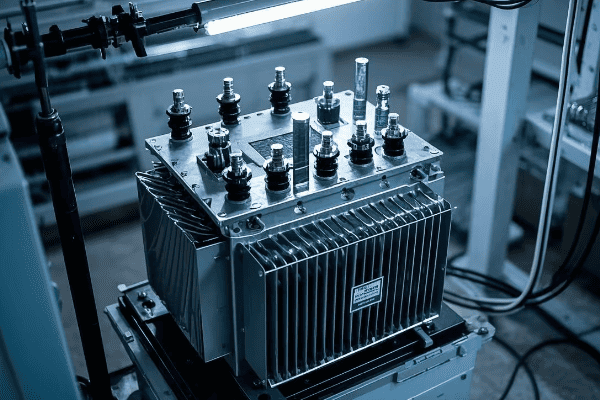
Throughout my career, I've overseen numerous transformer installations and maintenance programs. Let's dive into the best practices I've gathered over the years:
Installation Best Practices
-
Location Selection
- Choose a dry, well-ventilated area
- Ensure easy access for maintenance
- Keep away from flammable materials
-
Proper Mounting
- Use a level, stable platform
- Allow for vibration dampening
- Ensure adequate clearance on all sides
-
Electrical Connections
- Use appropriately sized cables
- Ensure tight, secure connections
- Implement proper phase rotation
-
Grounding
- Install a robust grounding system
- Connect transformer case to ground
- Verify ground resistance meets standards
-
Protection Devices
- Install circuit breakers or fuses
- Implement surge protection
- Consider temperature monitoring devices
| Installation Step | Key Consideration | Common Mistake to Avoid |
|---|---|---|
| Location | Ventilation and accessibility | Placing in confined spaces |
| Mounting | Stability and vibration control | Inadequate support structure |
| Connections | Proper sizing and tightness | Loose or undersized cables |
| Grounding | Low resistance path to earth | Neglecting proper grounding |
| Protection | Appropriate rated devices | Omitting surge protection |
I remember a project where a client insisted on installing their 75kVA transformer in a cramped, poorly ventilated room. We had to redesign the entire electrical room to ensure proper airflow and accessibility, highlighting the importance of proper planning and location selection.
Maintenance Schedule and Procedures
-
Regular Visual Inspections (Monthly)
- Check for oil leaks
- Inspect for signs of overheating
- Verify proper operation of cooling fans (if applicable)
-
Electrical Testing (Annually)
- Measure insulation resistance
- Check turns ratio
- Perform winding resistance tests
-
Oil Testing (Every 1-3 Years)
- Analyze oil for contaminants
- Check dielectric strength
- Test for dissolved gases
-
Thermal Imaging (Annually)
- Scan for hot spots
- Identify potential issues before failure
-
Load Monitoring (Continuous)
- Use power monitoring systems
- Ensure transformer isn't overloaded
Common Maintenance Issues and Solutions
-
Overheating
- Cause: Overloading, poor ventilation
- Solution: Reduce load, improve airflow, clean cooling fins
-
Oil Leaks
- Cause: Gasket failure, physical damage
- Solution: Replace gaskets, repair tank if necessary
-
Insulation Degradation
- Cause: Age, overheating, moisture ingress
- Solution: Regular oil treatment, consider rewinding if severe
-
Loose Connections
- Cause: Vibration, thermal cycling
- Solution: Regular tightening, use lock washers
-
Noise and Vibration
- Cause: Loose core bolts, resonance with mounting
- Solution: Tighten core, improve mounting isolation
I once worked with a small manufacturing plant that neglected regular maintenance on their 75kVA transformer. A routine inspection revealed severe oil degradation, which we caught just in time to prevent a catastrophic failure. This experience reinforced the importance of sticking to a rigorous maintenance schedule.
Advanced Maintenance Techniques
-
Partial Discharge Testing
- Detects insulation weaknesses
- Can be performed online in some cases
-
Frequency Response Analysis
- Identifies mechanical issues in windings and core
- Useful for detecting damage from short circuits
-
Oil Regeneration
- Restores oil properties without replacement
- Can extend transformer life significantly
-
Online Monitoring Systems
- Continuous monitoring of key parameters
- Enables predictive maintenance strategies
Safety Considerations During Maintenance
-
Lockout/Tagout Procedures
- Ensure transformer is de-energized before work
- Use proper grounding techniques
-
Personal Protective Equipment (PPE)
- Wear appropriate arc-flash rated clothing
- Use insulated tools when necessary
-
Oil Handling Safety
- Follow proper procedures for oil sampling and disposal
- Be aware of potential PCB contamination in older units
-
Working at Heights
- Use proper fall protection when accessing top of transformer
- Ensure stable work platforms
Proper installation and maintenance of 75kVA transformers are crucial for ensuring their optimal performance, longevity, and safety. By following these best practices, businesses can minimize downtime, reduce the risk of failures, and maximize the return on their investment in electrical infrastructure. Remember, while some maintenance tasks can be performed in-house, always consult with qualified professionals for complex issues or major servicing to ensure the safety and reliability of your power system.
Energy Efficiency and Cost Savings: Why 75kVA Transformers Are Ideal for Small Businesses?
Are high energy costs eating into your small business profits? You're not alone in this struggle, but there's a solution you might be overlooking.
75kVA transformers offer excellent energy efficiency, typically above 97%, which translates to significant cost savings for small businesses. Their optimal size reduces energy losses while providing adequate power capacity, making them an ideal choice for balancing performance and economic operation.
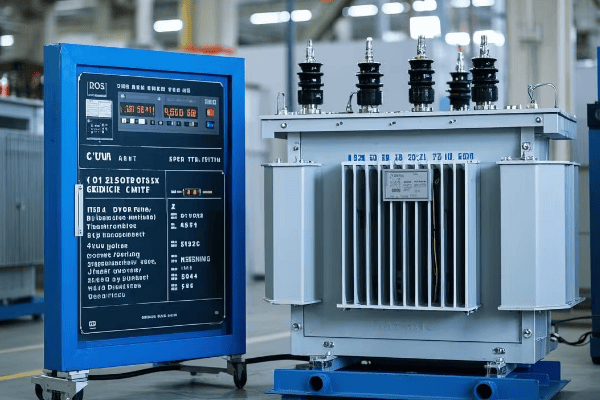
In my years of advising small businesses on energy solutions, I've seen remarkable transformations in energy consumption and costs after implementing 75kVA transformers. Let's explore why these transformers are so effective for energy efficiency and cost savings:
Energy Efficiency Features of 75kVA Transformers
-
High Efficiency Rating
- Typically 97-98% efficient
- Minimal energy lost as heat
-
Low Core Losses
- Use of high-quality core materials
- Optimized core design to reduce magnetic losses
-
Reduced Copper Losses
- Efficient winding designs
- Use of high-conductivity materials
-
Optimal Size for Small Businesses
- Matches typical power needs without oversizing
- Operates at peak efficiency under normal loads
-
Load Management Capabilities
- Maintains high efficiency across varying loads
- Ideal for businesses with fluctuating power demands
| Feature | Efficiency Impact | Cost Saving Potential |
|---|---|---|
| High Efficiency Rating | Minimal energy waste | Direct reduction in energy bills |
| Low Core Losses | Consistent efficiency | Savings even during low-load periods |
| Reduced Copper Losses | Less energy lost as heat | Lower cooling costs |
| Optimal Sizing | Operates in peak efficiency range | Avoids costs of oversized equipment |
| Load Management | Efficient across load ranges | Savings during both peak and off-peak times |
I recall a small printing shop that was struggling with high energy costs. After installing a 75kVA transformer, they saw a 20% reduction in their monthly electricity bills, significantly impacting their bottom line.
Cost Savings Breakdown
-
Direct Energy Cost Reduction
- Lower kWh consumption due to high efficiency
- Example: A business using 50kVA continuously could save over $1000 annually
-
Reduced Cooling Costs
- Less heat generation means lower HVAC demands
- Can lead to 5-10% savings on cooling costs
-
Longer Equipment Lifespan
- Stable, clean power reduces wear on connected equipment
- Potential for significant savings on equipment replacement and repairs
-
Demand Charge Reduction
- Better load management can lower peak demand
- Some utilities offer lower rates for improved power factor
-
Maintenance Cost Savings
- Reliable operation means less frequent repairs
- Lower lifetime maintenance costs compared to less efficient models
Calculating Return on Investment (ROI)
-
Initial Investment
- Cost of 75kVA transformer: Typically $5,000 - $8,000
- Installation costs: Varies, but usually $1,000 - $3,000
-
Annual Energy Savings
- Calculate based on efficiency improvement
- Example: 2% efficiency gain on 50kVA continuous load ≈ $1,500/year
-
Additional Savings
- Equipment longevity: Estimate $500 - $1,000/year
- Maintenance reduction: Approximately $200 - $500/year
-
ROI Calculation
- Total Investment: $8,000 (transformer + installation)
- Annual Savings: $2,500 (energy + equipment + maintenance)
- Simple Payback Period: Approximately 3.2 years
-
Long-Term Benefits
- Typical transformer lifespan: 20-30 years
- Potential lifetime savings: $50,000 - $75,000
In my experience, most small businesses see a return on their investment in 3-5 years, with significant long-term savings thereafter.
Best Practices for Maximizing Efficiency and Savings
-
Proper Sizing
- Conduct a thorough power audit before selection
- Choose a transformer that matches your typical load profile
-
Regular Maintenance
- Keep the transformer clean and well-ventilated
- Perform annual efficiency tests
-
Load Management
- Balance loads across phases
- Consider power factor correction for further savings
-
Monitoring and Analysis
- Install power monitoring systems
- Regularly analyze energy consumption patterns
-
Upgrade Connected Equipment
- Use energy-efficient devices to complement the transformer
- Consider smart power strips and LED lighting
Case Study: Retail Store Energy Transformation
I worked with a medium-sized retail store that implemented a 75kVA transformer as part of an energy efficiency overhaul. Here's what we achieved:
-
Before Implementation
- Monthly energy cost: $2,500
- Frequent equipment failures due to power quality issues
-
After Implementation
- 18% reduction in energy costs (saving $450/month)
- 50% reduction in equipment-related downtime
- Improved lighting quality and HVAC performance
-
Long-Term Impact
- ROI achieved in 2.8 years
- Projected savings of over $100,000 over 20 years
75kVA transformers offer an ideal balance of energy efficiency and capacity for small businesses. Their ability to provide stable, efficient power translates directly into cost savings and improved operations. By carefully selecting, installing, and maintaining these transformers, small businesses can significantly reduce their energy costs and improve their bottom line. As energy prices continue to rise, the importance of such efficiency measures will only grow, making 75kVA transformers an increasingly valuable investment for forward-thinking small business owners.
Conclusion
75kVA transformers offer an ideal power solution for small businesses, balancing efficiency, cost-effectiveness, and scalability. They provide stable power, reduce energy costs, and support business growth. Proper installation and maintenance ensure optimal performance and longevity, making them a smart investment for various small commercial applications.


